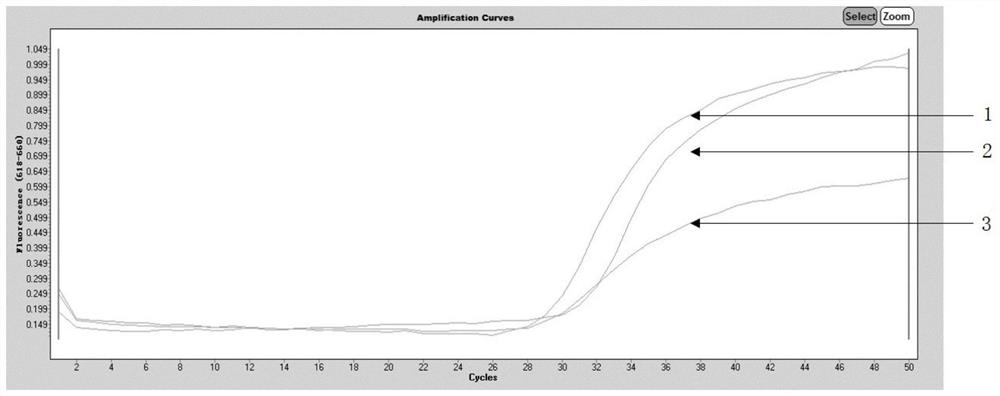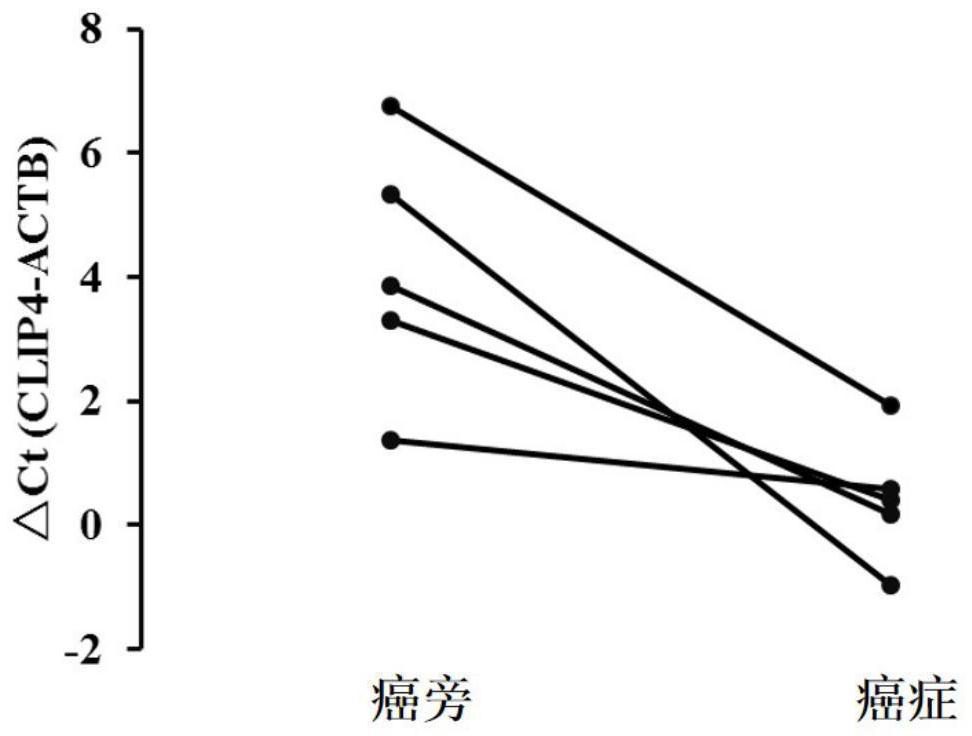Primer probe set and reagent kit for detecting digestive tract tumor marker and application of reagent kit
A technology of digestive tract tumors and primer probes, which is applied in the determination/testing of microorganisms, recombinant DNA technology, biochemical equipment and methods, etc. Realize issues such as endoscopic screening
- Summary
- Abstract
- Description
- Claims
- Application Information
AI Technical Summary
Problems solved by technology
Method used
Image
Examples
Embodiment 1
[0039] The detection object is colorectal advanced adenoma, colorectal cancer and gastric cancer genomic DNA solution after bisulfite conversion. Prepare the fluorescent quantitative PCR reaction system with primer probe set 1, the fluorescent quantitative PCR reaction system is: primer concentration 0.4mM, probe concentration 0.1mM, 1×PCR buffer, 6mM MgCl 2 Solution, 0.1U / ul DNA polymerase, PCR reaction mixing volume is 15ul, DNA template volume is 15ul, reaction condition is 95°C for 20 minutes, (95°C for 10 seconds, 56°C for 30 seconds, 72°C for 10 seconds) × 50 Cycle, 40°C for 1 minute.
[0040] The result is as figure 1 As shown, wherein, 1 is colorectal cancer, 2 is colorectal advanced adenoma, and 3 is gastric cancer. Genomic DNA has an obvious amplification curve and is positive.
Embodiment 2
[0042] Using 5 pairs of colorectal cancer and para-cancerous tissues as detection objects, DNA was extracted with QIAGEN DNeasy Blood&Tissue Kit, and transformed and purified with Bisulfite Rapid Conversion Kit from Suzhou Weishan Biotechnology Co., Ltd. Prepare the fluorescent quantitative PCR reaction system with primer probe set 2: primer concentration 0.2mM, probe concentration 0.1Mm, 1×PCR buffer, 6mM MgCl 2 Solution, 0.12U / ul DNA polymerase, PCR reaction mixing volume is 15ul, DNA template volume is 15ul, reaction condition is 95°C for 20 minutes, (95°C for 10 seconds, 60°C for 30 seconds, 72°C for 15 seconds) × 50 Cycle, 40°C for 30 seconds.
[0043] Test results such as figure 2As shown, the methylation level of CLIP4 gene in colorectal cancer was significantly higher than that in paracancerous tissues, proving that methylated CLIP4 gene can be used to distinguish colorectal cancer from cancer tissues and non-cancer tissues.
Embodiment 3
[0045] Using 5 pairs of colorectal cancer and para-cancerous tissues as detection objects, DNA was extracted with QIAGEN DNeasy Blood&Tissue Kit, and transformed and purified with Bisulfite Rapid Conversion Kit from Suzhou Weishan Biotechnology Co., Ltd. Prepare the fluorescent quantitative PCR reaction system with primer probe set 3: primer concentration 0.4mM, probe concentration 0.1Mm, 1.5×PCR buffer, 6mM MgCl 2 Solution, 0.12U / ul DNA polymerase, PCR reaction mixing volume is 15ul, DNA template volume is 15ul, reaction condition is 95°C for 20 minutes, (95°C for 10 seconds, 60°C for 30 seconds, 72°C for 15 seconds) × 50 Cycle, 40°C for 30 seconds.
[0046] Test results such as image 3 As shown, the methylation level of CLIP4 gene in colorectal cancer was significantly higher than that in paracancerous tissues, proving that methylated CLIP4 gene can be used to distinguish colorectal cancer from cancer tissues and non-cancer tissues.
PUM
 Login to View More
Login to View More Abstract
Description
Claims
Application Information
 Login to View More
Login to View More - R&D Engineer
- R&D Manager
- IP Professional
- Industry Leading Data Capabilities
- Powerful AI technology
- Patent DNA Extraction
Browse by: Latest US Patents, China's latest patents, Technical Efficacy Thesaurus, Application Domain, Technology Topic, Popular Technical Reports.
© 2024 PatSnap. All rights reserved.Legal|Privacy policy|Modern Slavery Act Transparency Statement|Sitemap|About US| Contact US: help@patsnap.com










